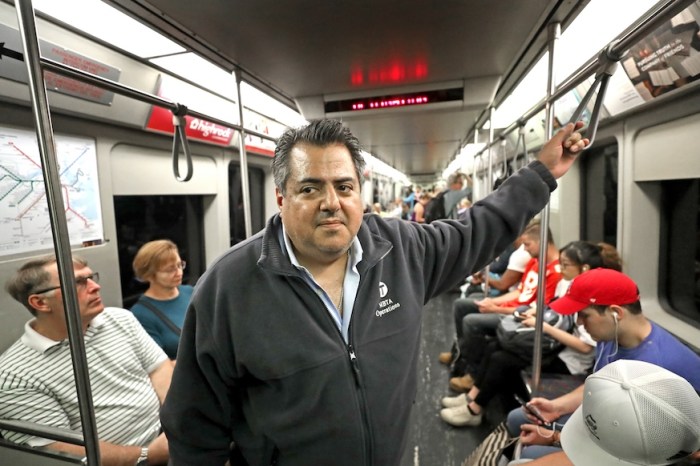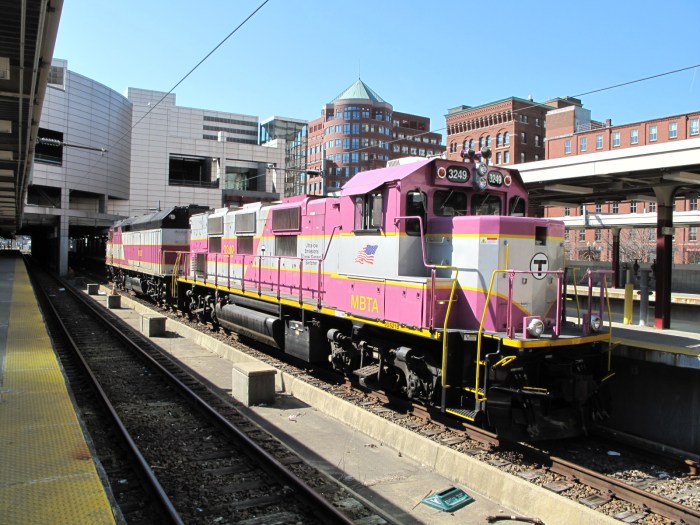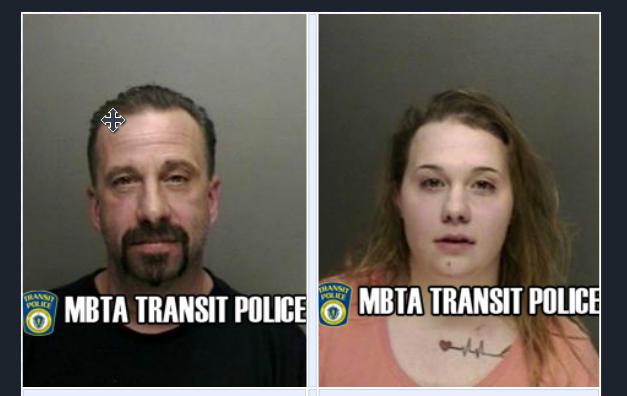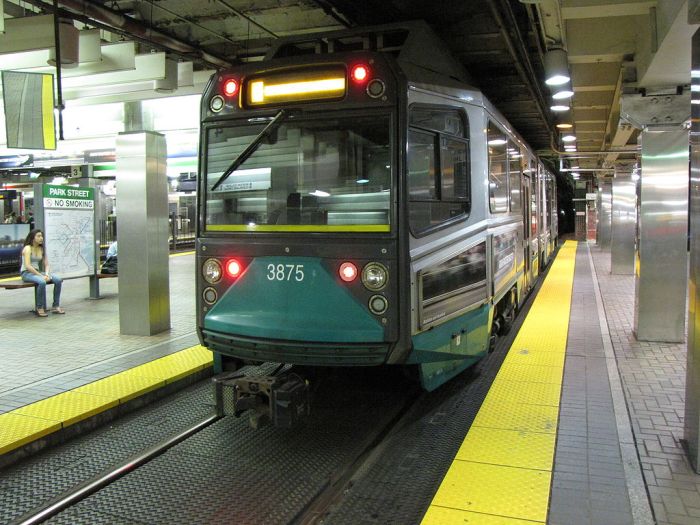Light gymnastics and dodging traffic are not part of the typical boarding procedure for MBTA commuters, but after a comprehensive review the transit agency identified 133 bus stops where that might be required. A review of roughly 7,600 bus stops throughout the sprawling system identified 209 — or just under 3 percent — where there is no accessible path to board from a sidewalk so that passengers must get on and off the bus in the street. Laura Brelsford, the assistant general manager for systemwide accessibility, said 133 of those stops are “very strong candidates for elimination,” with 99 percent of them serving less than 10 riders per day. One example of a “critical” bus stop that Brelsford showed the T’s Fiscal and Management Control Board on Monday is on Walnut Street in Saugus, where the bus stop sign is behind a guardrail next to a body of water and riders must board on the road’s shoulder. Another in Somerville is also barricaded by a guardrail on busy Mystic Avenue. Brelsford said the MBTA plans to reach out to municipalities where the stops are located to determine whether there are reasons to keep them in place, and she said changes wouldn’t be made until this summer. Another 100 stops have yet to be surveyed. “This is a great example of how when we set out to help our customers with differing abilities we help all our customers,” said Transportation Secretary Stephanie Pollack. “Because the truth is these stops are no safer for someone who is physically very able than for someone who isn’t.” Pollack emphasized that eliminating the stops would not amount to a service cut as riders would be able to switch to another stop within 750 feet of the stop proposed for elimination.
Buses serve more customers in total than any individual train line, according to MBTA data. In fiscal 2015, there were roughly 113 million MBTA bus trips, compared to about 88 million on the Red Line — the busiest subway line. Transportation officials were unsure how bus stops wound up with guardrails shielding access to the buses.
“Our riders’ guess is as good as anyone’s,” Brelsford told the News Service. “We know a lot of those bus stops have been in place for decades. My guess is that signs went up first; guardrails went up second, and nobody thought to raise the issue.” The survey also showed about half of the bus stops are within 25 feet of a crossing, 8 percent have a shelter and 7 percent have an unsheltered bench.
MBTA cutting obstructed bus stops

MBTA




















